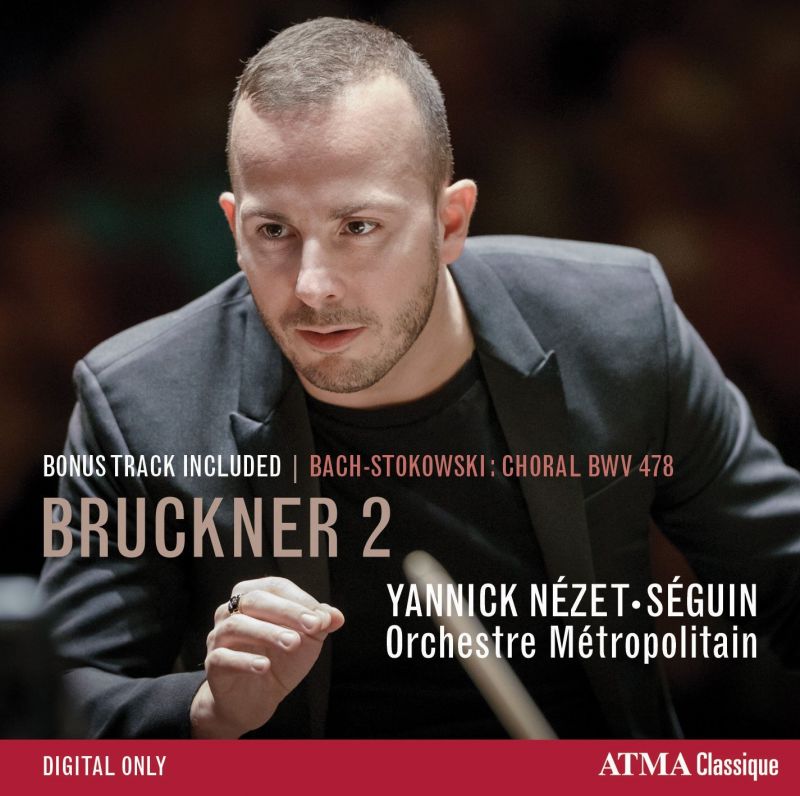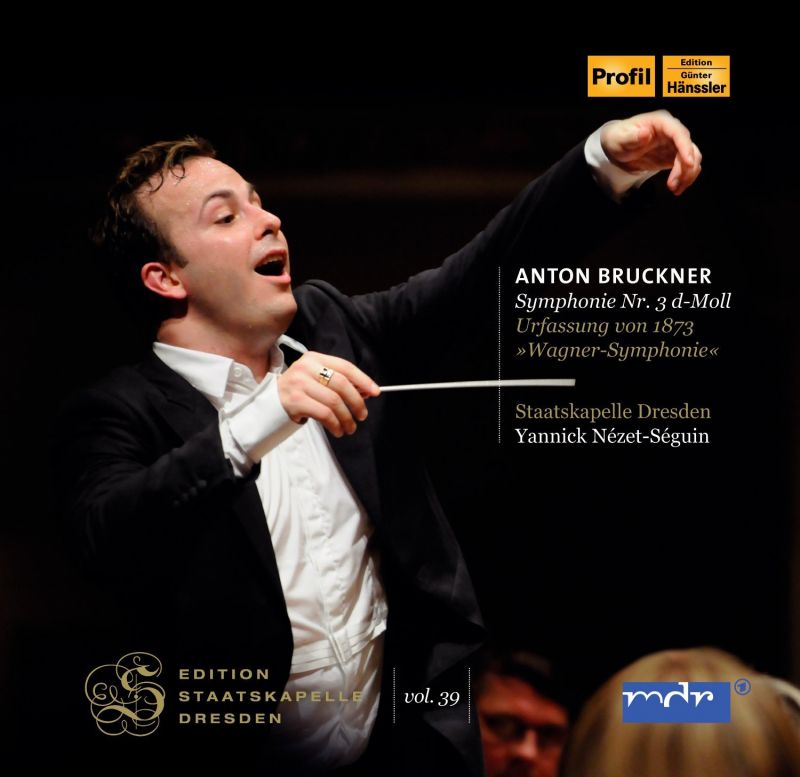BRUCKNER Symphonies Nos 2 & 3
View record and artist detailsRecord and Artist Details
Composer or Director: Anton Bruckner
Genre:
Orchestral
Label: ATMA
Magazine Review Date: 12/2016
Media Format: CD or Download
Media Runtime: 66
Mastering:
DDD
Catalogue Number: ACD2 2708

Tracks:
| Composition | Artist Credit |
|---|---|
| Symphony No. 2 |
Anton Bruckner, Composer
Anton Bruckner, Composer Orchestre Métropolitain Yannick Nézet-Séguin, Conductor |
Composer or Director: Anton Bruckner
Genre:
Orchestral
Label: Profil
Magazine Review Date: 12/2016
Media Format: CD or Download
Media Runtime: 72
Mastering:
DDD
Catalogue Number: PH12011

Tracks:
| Composition | Artist Credit |
|---|---|
| Symphony No. 3 |
Anton Bruckner, Composer
Anton Bruckner, Composer Staatskapelle Dresden Yannick Nézet-Séguin, Conductor |
Author: Christian Hoskins
Whatever the reasons for Nézet-Séguin’s choice (no explanation is provided in the booklet-note), in practice we get to hear the horn solo at the end of the 1872 Adagio (which Bruckner later rescored for clarinet) without the additional 106 bars of music found in the 1872 finale. The Adagio is a highlight of this recording, with eloquent contributions not just from solo horn but also from violin, flute and bassoon. Here, as elsewhere, Nézet-Séguin’s conducting is direct and straightforward, Bruckner’s markings diligently observed, particularly with regard to dynamics. Among recordings of the Haas score, I wouldn’t want to be without Haitink’s taut and often fiery performance, nor the expressive splendour of Chailly’s version, but Nézet-Séguin’s is a commendable addition to his ongoing cycle.
Nézet-Séguin’s recording of the Third Symphony on Profil comes into direct competition with his 2014 recording for ATMA Classique, both featuring the Nowak edition of the first version of 1873. The ATMA recording has the advantage of a conductor with an additional six years of experience, a not insignificant factor with a musician then still under 40, while the Profil recording has the inestimable benefit of the Staatskapelle Dresden. On this occasion, orchestra trumps experience. The Dresden performance is notable for the slow tempi that were a common feature of Nézet-Séguin’s early Bruckner performances, requiring almost six minutes longer than in Montreal. However, the earlier performance has a sense of purpose and elemental power that eclipses the later one, aided in no small part by the phrasing, expressiveness and tonal depth of the orchestral playing. A few transitions might have been negotiated more smoothly here and there and, as so often with this edition of the symphony, the finale doesn’t quite convince, but the performance overall has a grandeur that befits the scale of Bruckner’s original conception. Derived from a radio recording, the sound quality is excellent and the audience noise minimal. The inclusion of a 50-page booklet in German and English necessitates a double jewel case being used, although only a single CD is needed for the symphony.
Discover the world's largest classical music catalogue with Presto Music.

Gramophone Digital Club
- Digital Edition
- Digital Archive
- Reviews Database
- Full website access
From £8.75 / month
Subscribe
Gramophone Full Club
- Print Edition
- Digital Edition
- Digital Archive
- Reviews Database
- Full website access
From £11.00 / month
Subscribe
If you are a library, university or other organisation that would be interested in an institutional subscription to Gramophone please click here for further information.




